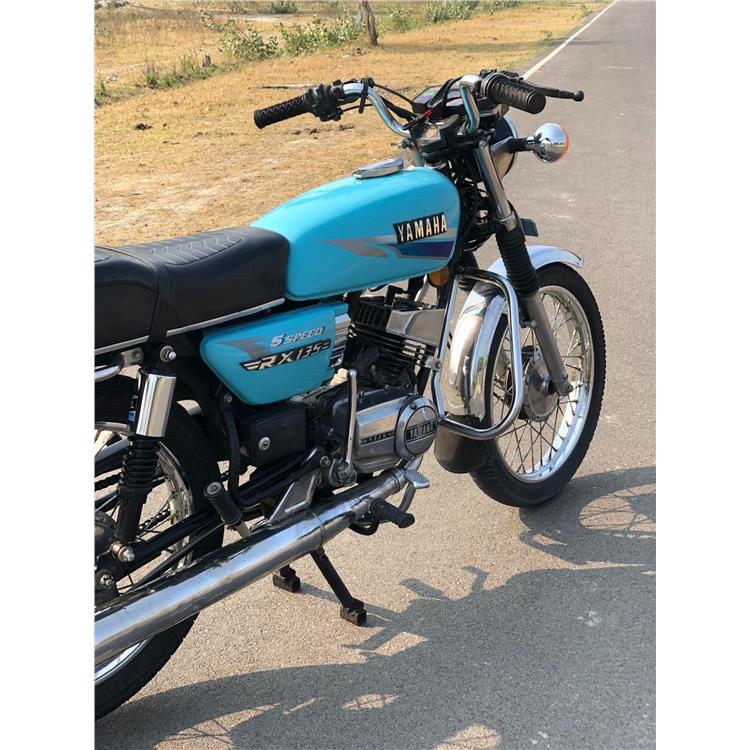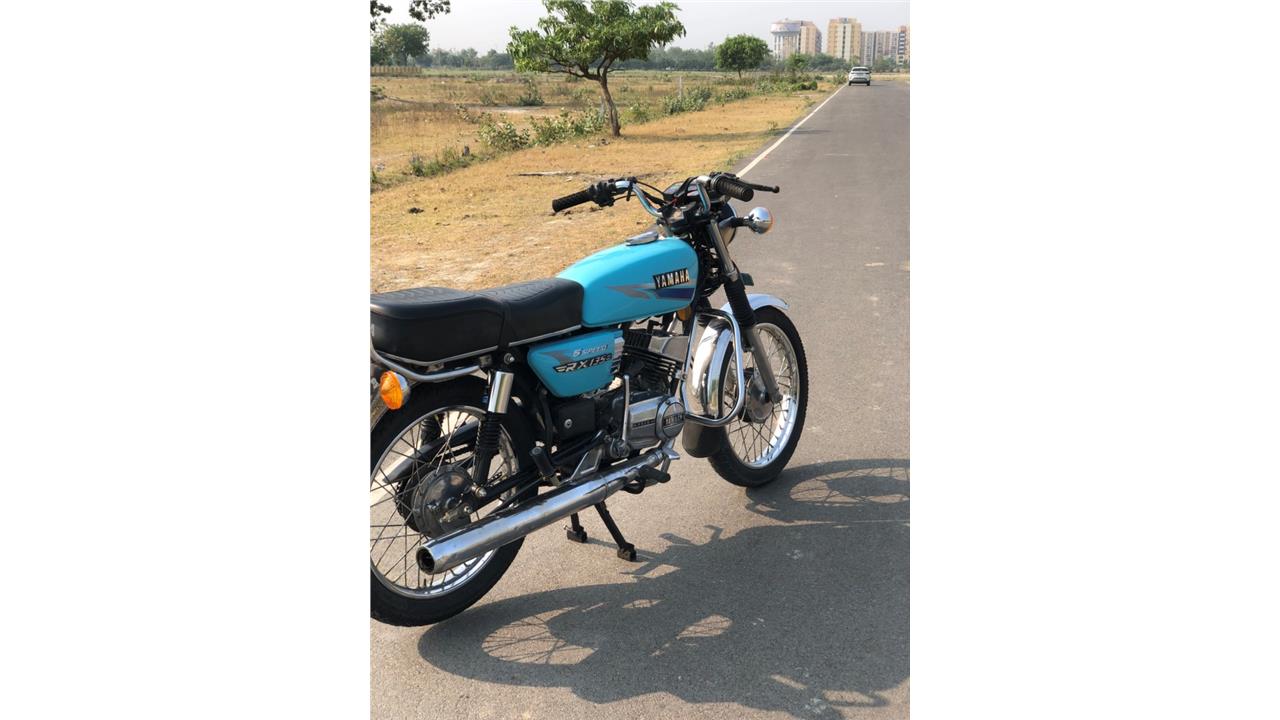


The RX-135 was released around end of the 1990s. In selected India cities, a factory-shipped RX-135 could be bought until August 2009. There were two versions of the bike sold in India — a four-speed version and a five-speed version. The 4-speed produced a power of 12 horsepower and the 5-speed version produced 14 horsepower.
The RX-135 had also been initially introduced as RXG with similar engine capacity but with numerous changes in bottom-end gearing primary ratio, sprockets and cylinder design, sticker design, ignition system and general looks.
Engine: The RX135 was equipped with a 132cc, air-cooled, two-stroke, single-cylinder engine. Depending on the variant, it produced between 12 to 14 horsepower.
Design: In terms of design, the RX135 retained much of the simplicity and minimalism of its predecessor, the RX100. However, there were changes like new graphics, a slightly different side panel, and, in later versions, a five-speed gearbox was offered alongside the standard four-speed variant.
Variants: Yamaha introduced different variants of the RX135 over its production run. This included the RXG, RX-Z (with a sportier look and different seat design), and the later models of RX135 with 5-speed transmission.
Sound: Like the RX100, the RX135 also had the characteristic two-stroke exhaust note which was loved by many enthusiasts.
Performance: With its larger displacement engine and lightweight frame, the RX135 continued the legacy of the RX series by offering impressive acceleration and an engaging ride experience.
Legacy: While the RX135 did not achieve the same level of iconic status as the RX100, it still found a dedicated fan base, especially among those who desired a bit more power and the option of a five-speed gearbox.
End of Production: Much like the RX100, the RX135's production was halted in the early 2000s. Stricter emission norms were challenging for two-stroke engines to meet, and there was a general market shift towards four-stroke motorcycles.
 peace of mind
peace of mind
 service history
service history
 transparent process
transparent process
 home location delivery
home location delivery
The RX-135 was released around end of the 1990s. In selected India cities, a factory-shipped RX-135 could be bought until August 2009. There were two versions of the bike sold in India — a four-speed version and a five-speed version. The 4-speed produced a power of 12 horsepower and the 5-speed version produced 14 horsepower.
The RX-135 had also been initially introduced as RXG with similar engine capacity but with numerous changes in bottom-end gearing primary ratio, sprockets and cylinder design, sticker design, ignition system and general looks.
Engine: The RX135 was equipped with a 132cc, air-cooled, two-stroke, single-cylinder engine. Depending on the variant, it produced between 12 to 14 horsepower.
Design: In terms of design, the RX135 retained much of the simplicity and minimalism of its predecessor, the RX100. However, there were changes like new graphics, a slightly different side panel, and, in later versions, a five-speed gearbox was offered alongside the standard four-speed variant.
Variants: Yamaha introduced different variants of the RX135 over its production run. This included the RXG, RX-Z (with a sportier look and different seat design), and the later models of RX135 with 5-speed transmission.
Sound: Like the RX100, the RX135 also had the characteristic two-stroke exhaust note which was loved by many enthusiasts.
Performance: With its larger displacement engine and lightweight frame, the RX135 continued the legacy of the RX series by offering impressive acceleration and an engaging ride experience.
Legacy: While the RX135 did not achieve the same level of iconic status as the RX100, it still found a dedicated fan base, especially among those who desired a bit more power and the option of a five-speed gearbox.
End of Production: Much like the RX100, the RX135's production was halted in the early 2000s. Stricter emission norms were challenging for two-stroke engines to meet, and there was a general market shift towards four-stroke motorcycles.
Top selling points -
Peppy and rev happy motor
Japanese reliability
Very light weight and nimble bike
Smooth gear shifts
Exhaust note which still is the best